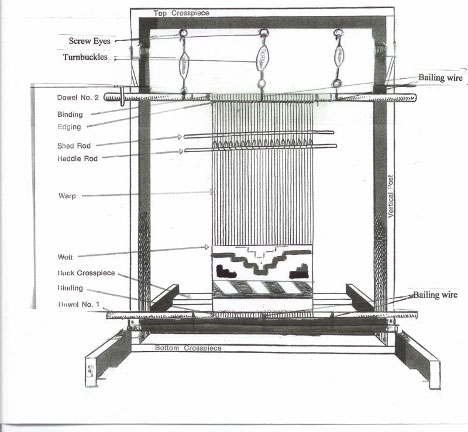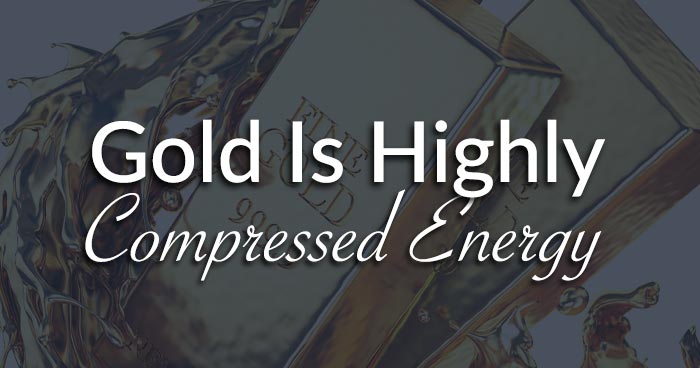When I was a kid, my parents would have friends over to play bridge. I could see how much fun they had. Their spirited card games lasted for hours.
One day I asked to learn the game. After 5 minutes, I walked away from the bridge lesson. It was too complicated. The precious metals subculture is also too complex. It takes on so much analysis. It's more complicated than it should be.
Some experts discuss the price action of gold relative to the strength of the US dollar. Even more, experts discuss how gold and silver hedge against inflation.
Then there are volumes of content on economic systemic risk and geopolitics. Recently, we've learned that the Silver Institute is calling for a shortage of silver, bringing out another slew of experts to discuss supply and demand.
The purpose of this article is to discuss the concept of embodied energy which is a more straightforward way to appreciate value.
Embodied energy is a material's total energy from the cradle to the grave. Here is a great example. Bricks are made from clay found close to the earth's surface. Then this clay is sifted and fed into an extruder that pushes the clay into long columns. These columns are cut with wires into various sizes (typically 4" x 8").
The clay units are stacked on rail cars that ride through a tunnel kiln for about three days. The kiln is powered by natural gas at an average temperature of 1,800 degrees.
Next, the clay-fired masonry units are sorted, bundled, and shipped to a job site. This is a complex chain of manufacturing steps. These are building material units stacked on rail cars and the process involves a fiery 100-foot-long journey.
Yet the embodied energy score for clay-fired bricks is less than 10. People understand that bricks have tremendous value. They are high in density and low in absorption. They do well in severe weather and protect structures from moisture intrusion.
In its ideal form, the marketplace consists of various contributors performing work and bringing their contributions to the market.
For example, a farmer can spend a season preparing soil, planting, harvesting then shipping their crops to stores.
Similarly, a rancher can raise cows and goats by giving them adequate feed and care. Meanwhile, I could spend the same time panning for gold during farmer and rancher seasons.
The farmer, the rancher, and the gold miner all respect each other's work, and the market ideally sets a fair exchange.
A Tasty Way to Think of Embodied Energy
A typical chocolate bar uses 250 watt hours to produce a chocolate bar.
250 watt-hours is the same energy used to cook 20 large servings of spaghetti.

So you can say that the energy used to make a chocolate bar is equal to the energy used to make 20 plates of spaghetti.
Think of all the time and work it takes for the wine to go from the grapes planted through bottling.
Think of all the time and work it takes for olive oil to go from planting and picking olive trees through pressing to bottling.
Think of the value of a Navajo rug:
- The sheep are fed, cared for and their wool is sheared.
- They spin yarn from the wool.
- A loom is built and look at the intricacy.
- Each color in the rug has its natural die.
- The weaver spends months on the project
This entire process from the sheep to building the loom to time and energy weaving the run is now represented in the Navajo rug’s embodied energy.

We should think of gold and silver the same way by considering all this complexity, utility, and scarcity.
We should stop overthinking precious metals. For example, how long would it take to explain Fibonacci Correlations compared to the story about the farmer, the rancher, and the miner?
We're entering an era where more and more internal combustion engines are slowly being replaced by electric motors.
Metals Needed to Produce EVs, Batteries, Solar Panels, Wind Turbines
For Copper, 6,700 million tonnes will be needed. In 2019, 20.4 million tonnes of Copper were produced. So it would take 328 years (using 2019 Copper production numbers as a baseline) to reach the required Copper amount needed to phase out fossil fuels.
For Nickel, 1,352 million tonnes will be needed. In 2019, 2.61 million tonnes of Nickel were produced. So it would take 518 years to reach the required Nickel amount needed to phase out fossil fuels.
For silver, 3.2 million tonnes will be needed to phase out fossil fuels. In 2019, 0.0265 million tonnes of silver were produced. So it would take 121 years to reach the required Silver amount needed to phase out fossil fuels. (Source Here)
Previously I wrote that brick has an embodied energy score under 10. Guess what the score is for gold? 310,000 MJ/kg (megajoules per kilogram)
No substance on planet Earth has this kind of store of energy value.

About the Author:
Jon Forrest Little graduated from the University of New Mexico and attended Georgetown University's Institute for Comparative Political and Economic Systems. Jon began his career in the mining industry and now publishes "The PickAxe" which covers topics surrounding precious metals, energy, history, and politics.





